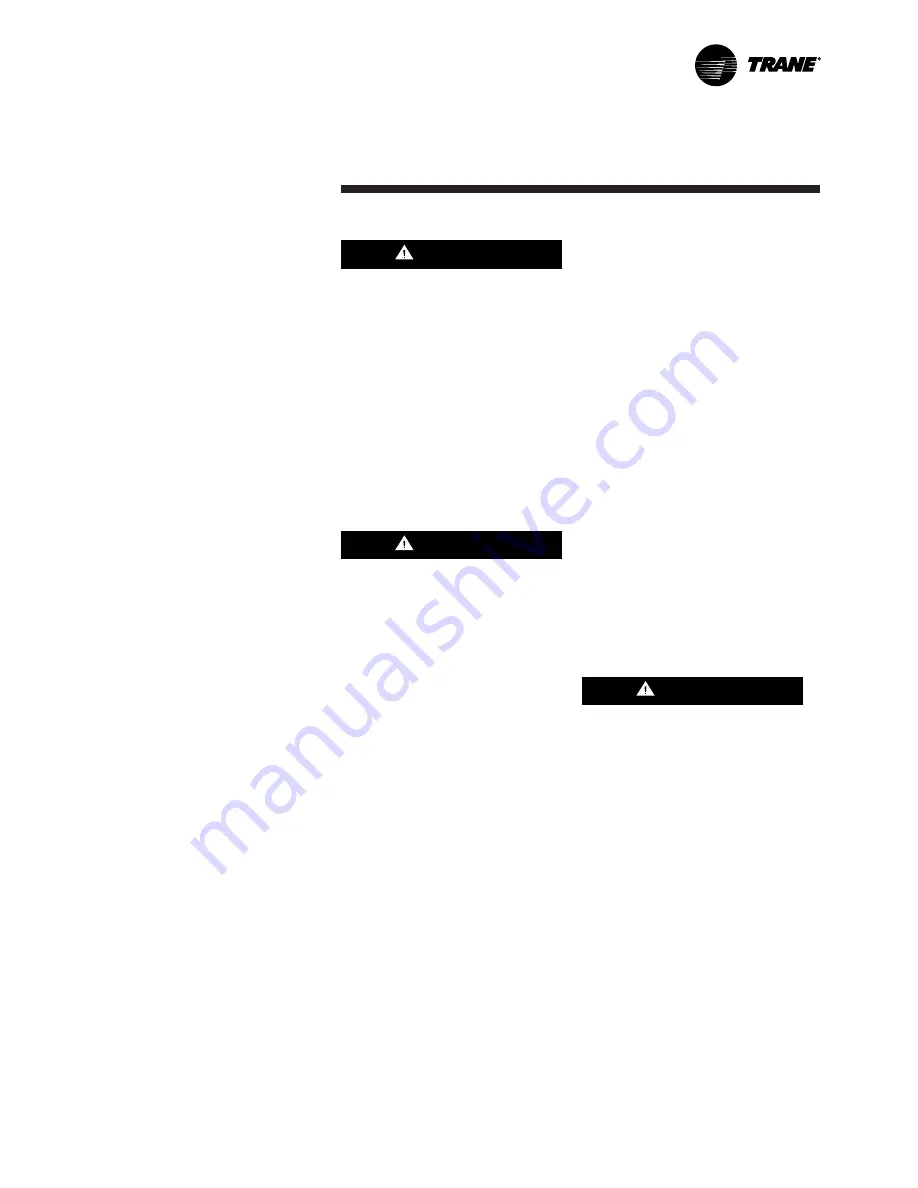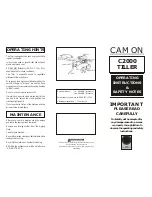
RTWB-SVN01B-E4
33
Periodic
Maintenance
Periodic maintenance
General
Perform all maintenance procedures
and inspections at the
recommended intervals. This will
prolong the life of the equipment
and minimize the possibility of
costly failures.
Weekly maintenance
After the unit has been operating for
approximately 30 minutes and the
system has stabilized, check the
operating conditions and complete
the procedures below:
[ ] Check the evaporator refrigerant
pressure and the condenser
refrigerant pressure in the
Refrigerant Report Menu on the
Clear Language Display.
[ ] If operating pressure conditions
seem to indicate a refrigerant
shortage, measure the system
superheat and system
subcooling. Refer to the Start-up
procedure paragraph.
[ ] If operating conditions indicate a
refrigerant overcharge, remove
refrigerant at the liquid-line
service valve. Allow refrigerant to
escape slowly to minimize oil
loss. Do not discharge refrigerant
into the atmosphere.
W
WA
AR
RN
NIIN
NG
G
Do not allow refrigerant to directly
contact skin, or injury from frostbite
may result.
[ ] Inspect the entire system for
unusual conditions.
Monthly maintenance
[ ] Perform all weekly maintenance
procedures
[ ] Measure and record the system
superheat. Refer to the Start-up
procedure paragraph.
[ ] Measure and record the system
subcooling. Refer to the Start-up
procedure paragraph.
W
WA
AR
RN
NIIN
NG
G
Position all electrical disconnects in
the “Open“ position and lock them,
to prevent injury or death due to
electrical shock.
Annual maintenance
[ ] Perform all weekly and monthly
maintenance procedures.
[ ] Check the refrigerant charge and
oil level. Refer to the Refrigerant
charging paragraph. Routine
changing of oil is not required.
[ ] Have a qualified laboratory
perform a compressor-oil analysis
to determine the system moisture
content and acid level. This
analysis is a valuable diagnostic
tool.
[ ] Check the pressure drop across
the oil filter. See the Maintenance
paragraph.
[ ] Contact a qualified service
organization to leak-test the
chiller, to check operating and
safety controls, and to inspect
electrical components for
deficiencies.
[ ] Inspect all piping components for
leakage and damage. Clean out
any inline strainers.
[ ] Clean and repaint any areas that
show signs of corrosion.
W
WA
AR
RN
NIIN
NG
G
Position all electrical disconnects in
the “Open“ position and lock them,
to prevent injury or death due to
electrical shock.








































